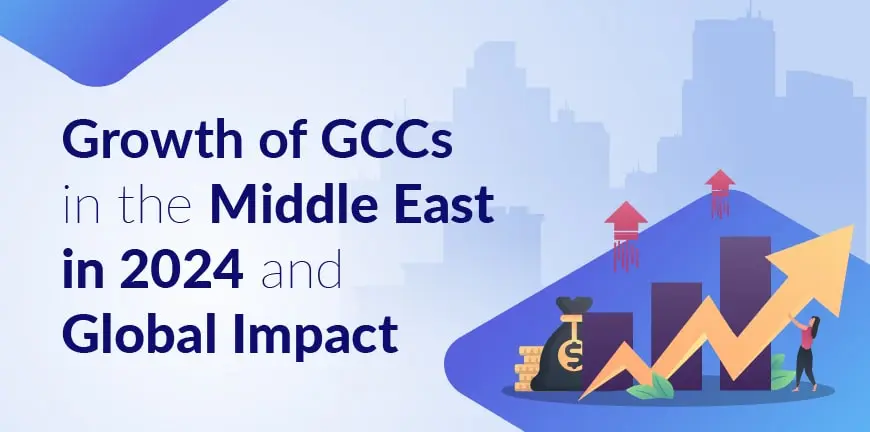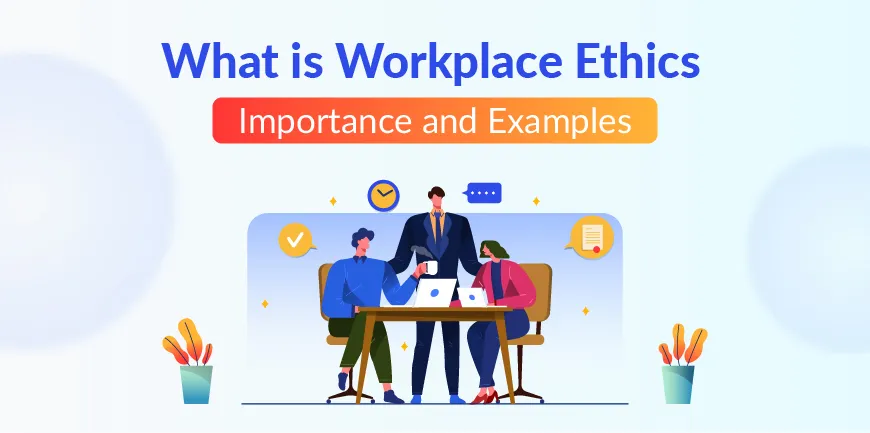
What Is a Talent Pipeline? Advantages & Best Practices
23/08/2024
Growth of GCCs in the Middle East in 2024 and Global Impact
27/08/2024Every organization is also a brand created by its employers. An employer brand is what speaks about the essence of an organization and tells a story as to how they are different from other brands in the labour market. Employer branding done right is crucial not only cos it communicates the right message to the audience, stakeholders and potential investors, but also helps attract the right people to work for your brand.
Employer Branding Meaning
Employer branding is the message that is communicated about a company by the employer to its employees, stakeholders and customers. It is also an image projected to attract, hire and retain potential employees. The employer branding must encompass the company’s value, reputation and work culture. Usually, marketing professionals are the ones who create an employer branding strategy that essentially highlights the reputation of a company and influence how employees look and perceive your brand.
According to Glassdoor research, 86% of job seekers research about a company, look at their reviews, ratings before deciding whether they want to apply for a job or not. The better the employer branding, better are your chances of attracting top talent that would help your company grow.
Why is Employer Branding important?
Unlike the much older times, the much simpler times, when a company’s message communicated itself, today, it isn’t the case anymore. Many employers are openly embracing the importance of employer branding as it happens to be one of the best ways to enhance the brand’s influence and credibility.
Organisations now recognise the value of a branding approach to the whole employee lifecycle as they seek to build an engaged workforce and ensure a positive work experience. Additionally, a good employer brand performs better against competitors and are much more successful in retaining talent as well as increasing levels of employee engagement. A 2022 report by CIPD revealed that about 75% of respondents mentioned that they intend to take improved measures on enhancing brand image in the last year, and this rose to 84% for larger organisations. Most of these respondents even revealed that other than compensation and benefits, there are certain other elements like the employer’s perception towards career development opportunities play a key role in attracting the right candidates to your workforce.
How to get started with an employer branding strategy?
Between knowing you want to create an employer branding strategy and having an actual plan to create one there’s a lot of difference. HR (Human Resource) teams need to play their part by working collaboratively with colleagues in marketing, public relations, internal communications and corporate responsibility, to share expertise and get maximum benefits from developing a strong employer brand.
In order to develop a strong, relevant and honest employer brand, it’s important that you understand your current brand reputation in the market.
How to improve your employer brand?
1. Have the right goals in mind for your employer branding
Jotting down a brief about what exactly you are hoping to achieve with your employer branding strategy is the first step towards creating one. Set a few measurable goals that will help you stay on track, measure your actions and show return on investment. Some of these measurable goals could be
- Increasing the number of job applicants
- Acquiring better quality of candidates
- Better engagement between the candidates and your brand
- Building better awareness about your organisation
- Highlighting your brand reputation
2. Know the kind of candidates you are looking for (qualities, qualifications and skills)
Of course you may know about the qualifications, skills and experience you may be looking from your next potential employee, but it also helps to have a mind image of the characteristics and traits that you are looking for.
You can make a list of things that you require of your potential employee but are in terms of their current situation-
- Work experience, titles, salaries and qualifications
- Their goals and career aspirations
- Their drivers for motivation
- Things that demotivate them
By building a candidate persona you can better your employer branding efforts as it helps craft a message to your candidates and choose the aspects of your brand you must focus on and how and where to communicate with your prospects.
3. Create a solid EVP
An effective Employee Value Proposition can be created and developed only if you understand your current one, meaning you must have a clear idea of what your current and ex-employees value about your company and build from thereon. Make sure you write down things that your employees appreciate as this written down document is what is called the employee value proposition. This document basically communicates a message to your potential employees as to why your company is good for them and what makes it a desirable place for them to work. You can definitely include certain valuable information like pay, benefits, rewards, career recognition, work culture etc. Voice your thoughts as well as possible.
4. Of course, your words can make a difference, but a visual branding is what you need to take it up a notch
While your words can weave magic and create a positive image about your brand, some visuals about your branding can help enhance the power of these words. To improve employer branding you can post and share photos, videos of employees working at the office can give a clear picture of what a typical workday would look like, to potential employees and that’s exactly what they would like to know. Create an employer branding video to show people what it’s like to be at your company.
5. Use the right communication channels to communicate about your brand
There are about 10 things that a candidate may consider before sending out that application to your company. Candidates think of these 10 things before deciding about your brand’s image. Here’s where they are looking-
- Your website
- Social media like Instagram, LinkedIn, Facebook etc
- Employee reviews on Glassdoor
- Things they may have heard from friends, family or other networks about your brand
- Events
- Job advertisements
- Email communications
- Interviews
- Application process
- What your current employees are saying about your brand
6. Be active about creating and posting more engaging content often
Create more Blog posts, Slideshares, graphics and other forms of visual content can be created as you re-purpose existing content to further increase the reach of your message.
Create videos and create graphics praising your employees’ achievements – these can then be shared internally or even on your social media channels. Allow yourself to be more creative when it comes to showcasing your employer brand.
7. Assess, modify and improve your branding
In terms of your employer branding efforts, consider selecting metrics to monitor and measure its success.
A data-driven approach to HR has been growing in popularity and with good reason. Being able to track the impact of any changes you make will mean that you’re making more informed decisions, and it will help you show the ROI of the work you and your team are putting into the project.
Employer branding examples
Marketing or branding managers use a number of tools to run campaigns on employer branding. Som of the popular employer branding best practices are-
- Employee testimonials
- Corporate office and workplace setup
- Perks and benefits
- Workplace and company culture
- Company events
- Awards and recognition
Some of the best employer branding examples include-
1. EA- Electronics Arts
Right from their words as to how they communicate about their brand to their detailed hiring process, everything hits right and appeals to the candidate.
2. Oatly
A food company is Switzerland making dairy alternatives has made a distinguished career page that aligns it with who they present to consumers.
3. Mariott international
Marriott has identified three core pillars of their EVP, which represents an employee journey in their organization:
- Begin
- Belong
- Become
4. Mollie
Mollie’s ‘About’ page beautifully describes what the organization is about, including its core values and mission.
5. Netflix
The branding is straightforward and clear. Netflix’s careers page starts with the simple heading: A great workplace combines exceptional colleagues and hard problems.
However, these are just few examples of employer branding game gone right, there are so many others, popular and mildly popular who have their branding game spot on.
Conclusion
When it comes to employer branding, it’s essential for your company to dedicate time and effort to this area. Understanding its importance and the long-term benefit of a well-crafted strategy is crucial.
Like any successful initiative, employer branding requires a team effort.
While human resources and recruiting teams often take the lead, involving your CEO and marketing team is vital for achieving comprehensive success.
Although you can’t control every aspect of your employer brand, you can actively shape the narrative and ensure your company is viewed positively. This effort not only enhances employee retention and attracts top talent, but it also positively impacts other areas of your business.
Frequently Asked Questions
1. What are some common employer branding goals?
- Candidate quality
- Cost per hire and source of hire
- Brand awareness
- Number of open applications
- Offer acceptance rate
- Employee experience
- Employee referral rate
2. How to promote an employer brand?
- Curate a great candidate experience.
- Going digital with the right tools.
- Consistency in social media and other platforms.
- Sharing the company’s work culture.
- Ensure career growth and training for employees.
- Employer Brand survey.
- Define & articulate EVP.
3. What are the advantages and disadvantages of employer branding?
A strong brand can help to increase awareness, credibility, customer loyalty, and market share, but it can also be expensive, difficult to change, and carry the risk of reputation damage.
Contact Us For Business Enquiry

Rajkumar Shanmugam
Rajkumar Shanmugam is the Head of HR at ALP Consulting, bringing over 19 years of comprehensive HR leadership experience across India and international markets. His expertise spans talent acquisition, employee relations, performance management, compliance, and HR transformation. Rajkumar has a proven track record of driving people-centric initiatives, enhancing workplace culture, and aligning HR strategy with business goals. With extensive experience in US staffing operations and global mobility, he continues to lead organizational excellence through innovation and employee engagement.




